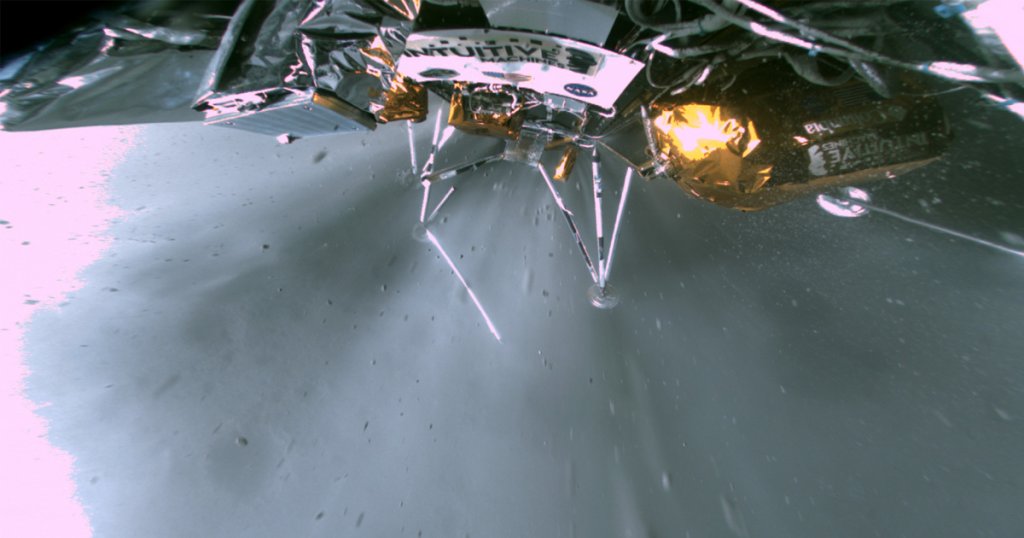“This confirms that Odie has permanently faded.”
Rest in Peace
It’s official, folks: the privately-launched Moon lander is dead.
Intuitive Machines, the company that launched the “Odysseus” lander with funding from NASA, has announced in a series of posts on X-formerly-Twitter that the historic first landing of a commercial craft on the lunar surface has failed to wake back up after a chaotic landing.
Launched back in February, the lander affectionately referred to as “Odie” tripped on a rock and fell over as it made Moonfall. And although the Houston-based company has made extensive efforts to spin it differently, it was essentially dead on arrival.
As Intuitive Machines explained in its more recent X thread, Odysseus “was not intended to survive the harsh temperatures of the lunar night,” although its programmers hoped it may be able to “call home if various systems outperformed manufacturer expectations.”
“Intuitive Machines started listening for Odie’s wake-up signal on March 20,” the thread continues, “when we projected enough sunlight would potentially charge the lander’s power system and turn on its radio.”
As the company now admits, however, waiting up for that call was for naught.
“Flight controllers decided their projections were correct, and Odie’s power system would not complete another call home,” Intuitive Machines posted. “This confirms that Odie has permanently faded after cementing its legacy into history as the first commercial lunar lander to land on the Moon.”
Lunar Optimism
Despite its hopes to the contrary, Intuitive Machines’ IM-1 mission has, as we’ve seen since Odysseus was launched, been marred by what seems in hindsight to be some pretty glaring design issues. The lander was very tall and top-heavy, which made it struggle to stay upright once it reached the obstacles of the lunar terrain.
As photos from its landing reveal, Odysseus did indeed take a ton of damage once it “gently tipped over,” as Intuitive’s CEO Steve Altemus told reporters last month.
Taken on February 27th, flight controllers commanded Odysseus to capture a new image using its narrow-field-of-view camera. Previous attempts to send photos from landing and the days following returned unusable imagery. After successfully transmitting the image to Earth, flight… pic.twitter.com/Qv0C3aSV9H
— Intuitive Machines (@Int_Machines) February 28, 2024
Still, as the company and NASA have repeatedly insisted, the mission wasn’t a complete failure. And it did manage to send back some important data about what went wrong in the process, too.
“The IM-1 mission achieved a historic landing farther south on the Moon than any vehicle ever has, laying the groundwork for our second mission,” reads a subsequent X post from Intuitive Machines. “IM-2 targets the Moon’s south pole at the Shackleton Connecting Ridge to search for water ice that future missions could potentially process for propulsion and life support.”
Given the precedent that SpaceX has set when it comes to repeated slips and fumbles, Intuitive Machines’ lander launch is being taken as a win — and who are we, as mere Earthlings, to judge success on the Moon?
More on NASA: Astronomers Furious at Plan to Shut Down NASA Space Telescope

